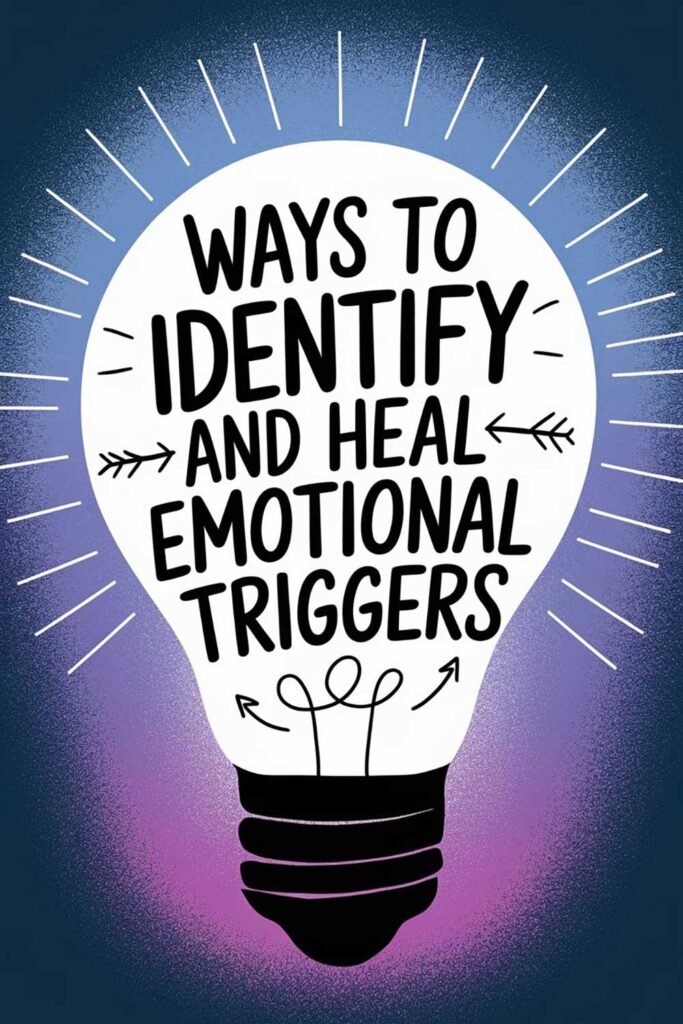
Healing Emotional Wounds: A Journey Toward Wholeness
Emotional wounds can linger long after the events that caused them, affecting your mental well-being, relationships, and ability to embrace life fully. Healing these wounds is a transformative process that requires patience, self-compassion, and intentional effort. It’s not about erasing the past but learning to move forward with strength and resilience. This guide explores practical strategies for healing emotional wounds and reclaiming your inner peace.

Understanding Emotional Wounds
Emotional wounds often stem from experiences like:
- Loss: The passing of a loved one, the end of a relationship, or other significant losses.
- Rejection: Feeling unwanted or excluded in personal or professional settings.
- Trauma: Experiencing or witnessing distressing events.
- Failure: Struggling with setbacks that challenge your self-worth.
These wounds can manifest as:
- Persistent sadness or anxiety.
- Difficulty trusting others.
- Low self-esteem and self-doubt.
- Emotional numbness or avoidance.
Why Healing Emotional Wounds Matters
- Improves Mental Health:
- Reduces symptoms of anxiety, depression, and chronic stress.
- Strengthens Relationships:
- Enables healthier connections by reducing emotional barriers.
- Fosters Resilience:
- Builds your ability to cope with future challenges.
- Enhances Self-Worth:
- Reinforces a positive self-image and self-compassion.
Steps to Heal Emotional Wounds
1. Acknowledge Your Pain
Healing begins with recognizing and validating your emotions. Suppressing or ignoring feelings often prolongs the pain.
- How to Practice:
- Journal about your emotions to gain clarity.
- Speak openly with a trusted friend or therapist about your experiences.
- Give yourself permission to feel without judgment.
2. Practice Self-Compassion
Treat yourself with the kindness and understanding you would offer a close friend.
- How to Practice:
- Replace self-critical thoughts with affirming ones.
- Engage in activities that nurture your well-being, such as mindfulness or hobbies.
- Avoid comparing your healing journey to others.
3. Seek Professional Support
Therapists and counselors provide tools and perspectives to help you navigate your emotions.
- How to Practice:
- Consider therapy modalities like Cognitive Behavioral Therapy (CBT) or Eye Movement Desensitization and Reprocessing (EMDR).
- Join support groups where you can share experiences with others who understand.
4. Build a Support Network
Surrounding yourself with empathetic and supportive individuals can make the healing process less isolating.
- How to Practice:
- Connect with friends or family who offer encouragement and understanding.
- Join community groups or online forums that align with your experiences.
5. Reframe Negative Thoughts
Shifting your perspective can help you find meaning in adversity.
- How to Practice:
- Focus on the lessons learned from challenging experiences.
- Replace thoughts like “This will always hurt” with “I am learning to grow from this.”
6. Engage in Mindfulness and Meditation
Mindfulness helps you stay present and reduces the power of negative emotions.
- How to Practice:
- Spend 10-15 minutes daily focusing on your breath or a calming mantra.
- Use guided meditations tailored to emotional healing.
7. Express Yourself Creatively
Creative outlets can help process emotions that are difficult to verbalize.
- How to Practice:
- Write poetry, paint, or play music as a form of self-expression.
- Explore art therapy or journaling prompts designed for emotional release.
8. Focus on Physical Well-Being
Caring for your body supports emotional healing by improving your overall resilience.
- How to Practice:
- Engage in regular physical activity, such as yoga, walking, or dancing.
- Maintain a balanced diet and prioritize restful sleep.
The Role of Forgiveness in Healing
Forgiving others—and yourself—can be a powerful step toward letting go of pain. Forgiveness doesn’t mean condoning harmful actions but releasing their hold on your emotions.
- How to Practice:
- Reflect on the benefits of forgiveness for your peace of mind.
- Write a letter (even if you don’t send it) to express your feelings and intentions.
Tools to Support Emotional Healing
- Apps: Use apps like Calm or Insight Timer for guided mindfulness practices.
- Books: Read works like “The Body Keeps the Score” by Bessel van der Kolk or “Rising Strong” by Brené Brown.
- Workshops: Attend personal development or emotional healing retreats.
Encourage Others
If this guide has inspired you to begin or continue your healing journey, consider sharing it with others who may benefit. Emotional healing is a path best traveled with empathy and support.
Picture This
Imagine waking up each day with a sense of peace and renewal. The weight of past pain no longer defines you, and you feel free to embrace life fully. Picture yourself building stronger relationships, pursuing dreams with confidence, and finding joy in the present moment. Healing is a journey, and each step forward brings you closer to wholeness.
What first step will you take today to begin healing your emotional wounds?






